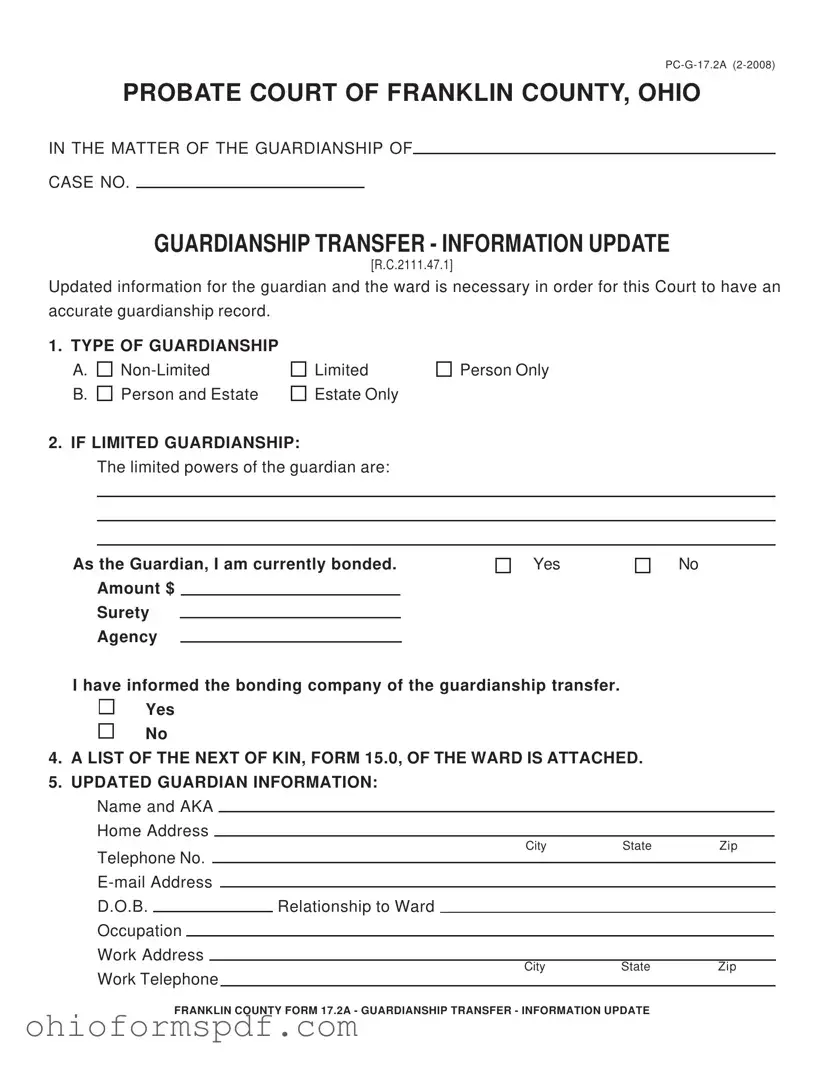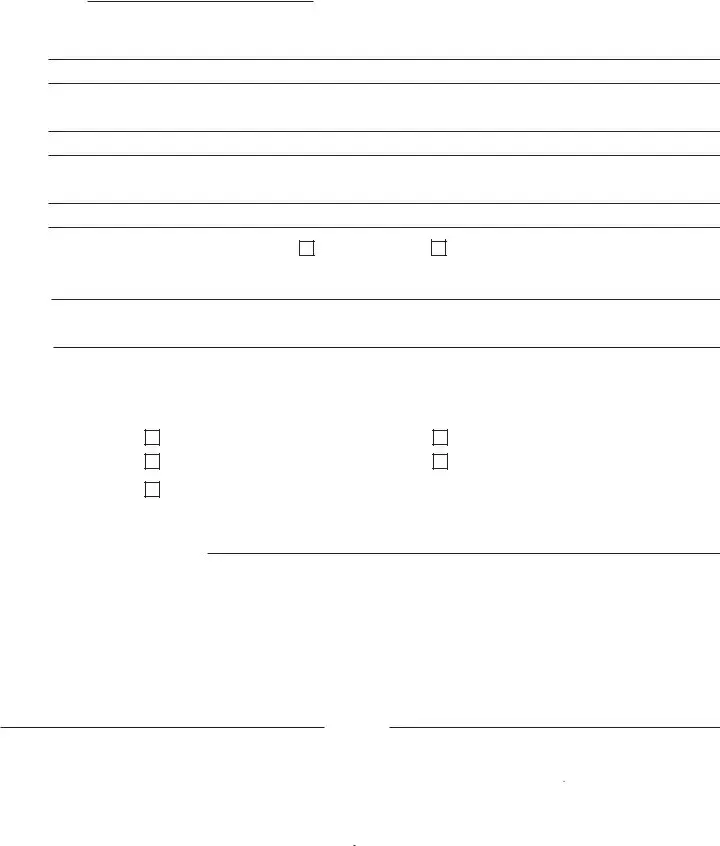The Ohio PC-G-17.2A form, designed for updating guardianship information in the Probate Court of Franklin County, shares similarities with several other types of legal documents that serve to maintain or update personal and legal status. One such document is the Annual Guardian’s Report, required in many jurisdictions to update the court on the condition of the ward and the affairs managed by the guardian over the past year. This report often includes questions on the physical and mental health of the ward, changes in living arrangements, and a summary of the ward's financial status, mirroring the comprehensive update required by the PC-G-17.2A form on specific aspects of the ward's care and status.
Similar to the Ohio PC-G-17.2A document, a Power of Attorney (POA) form also collects and formalizes information about personal and financial matters. However, a POA specifically grants an individual the authority to make decisions on another’s behalf, a concept that underlies the guardianship process. Both documents involve identifying individuals responsible for personal care or estate management, and both can limit the scope of authority, indicating the circumstances and areas in which decision-making power is granted.
A Living Will is another document that parallels the Ohio PC-G-17.2A form in certain respects. A living will specifies an individual's preferences regarding medical treatments and interventions in end-of-life situations. Though principally concerned with medical preferences, it can complement the information in the guardianship update form, especially in detailing the ward’s medical conditions and care preferences—information that is crucial for the appointed guardian to understand and respect.
The Do Not Resuscitate (DNR) order, often a standalone document or part of a larger medical directive, shares common purposes with elements of the PC-G-17.2A form. Both documents provide critical information relevant to the medical care of the individual, with the DNR specifically indicating wishes regarding emergency medical interventions. In the context of guardianship, understanding the ward's preferences for such interventions is essential, showcasing the interconnectedness of these documents in protecting the ward’s health and legal rights..
Another related document is the Statement of Expert Evaluation, usually required in guardianship cases to establish the need for a guardian due to incapacity. Like the PC-G-17.2A form, it collects detailed information about the individual’s physical and mental health, their ability to make decisions, and the necessity of appointing a guardian to manage their affairs. Both documents serve to outline the condition and capabilities of the individual, ensuring that guardianship is both necessary and appropriately tailored to the individual’s needs.
The Application for Guardianship itself bears resemblance to the Ohio PC-G-17.2A form, as it initiates the legal process of appointing a guardian by providing the court with initial comprehensive information about the ward's situation, the proposed guardian, and the necessity for guardianship. Both forms are integral to the guardianship process, with the application setting the stage and the Ohio PC-G-17.2A serving as a crucial update mechanism to ensure continued suitability and compliance of the guardianship arrangement.
Additionally, the Inventory of Guardianship Estate is a document tasked with listing the assets under the guardian’s management, similar to how the Ohio PC-G-17.2A form may include information about the ward's estate or financial affairs. Both documents ensure transparency and accountability in the management of the ward’s resources, albeit at different stages of the guardianship process.
Lastly, the Guardian’s Bond, differing in nature but related in purpose to the Ohio PC-G-17.2A form, ensures the guardian's faithful execution of their duties through a financial guarantee. While the bond itself is a security measure, the requirement that guardians report any changes in bonding status or capacity on the Ohio PC-G-17.2A form underscores the importance of financial stewardship and accountability in guardianship arrangements.



